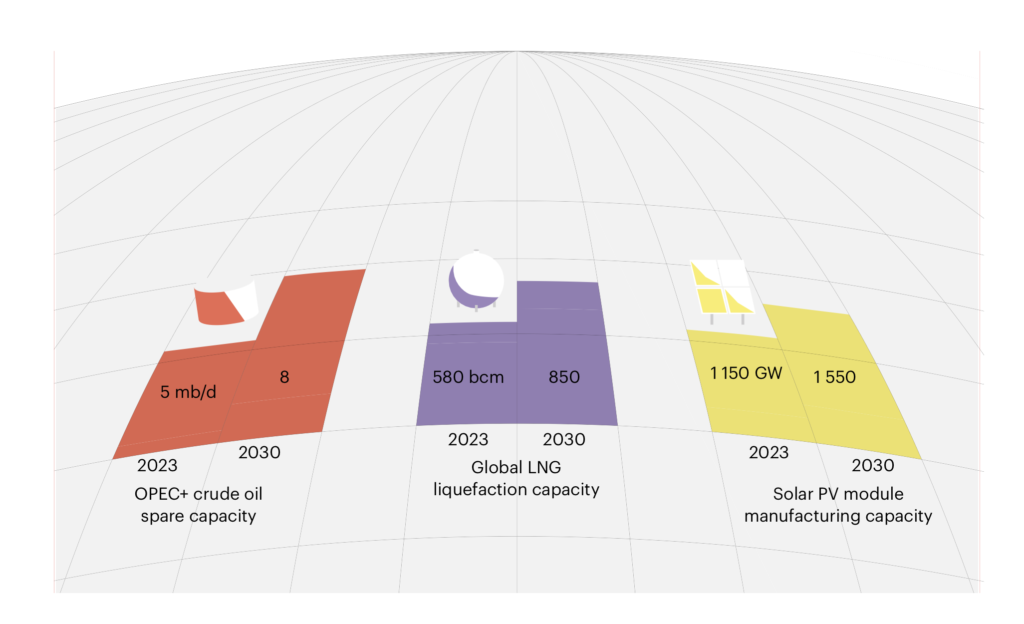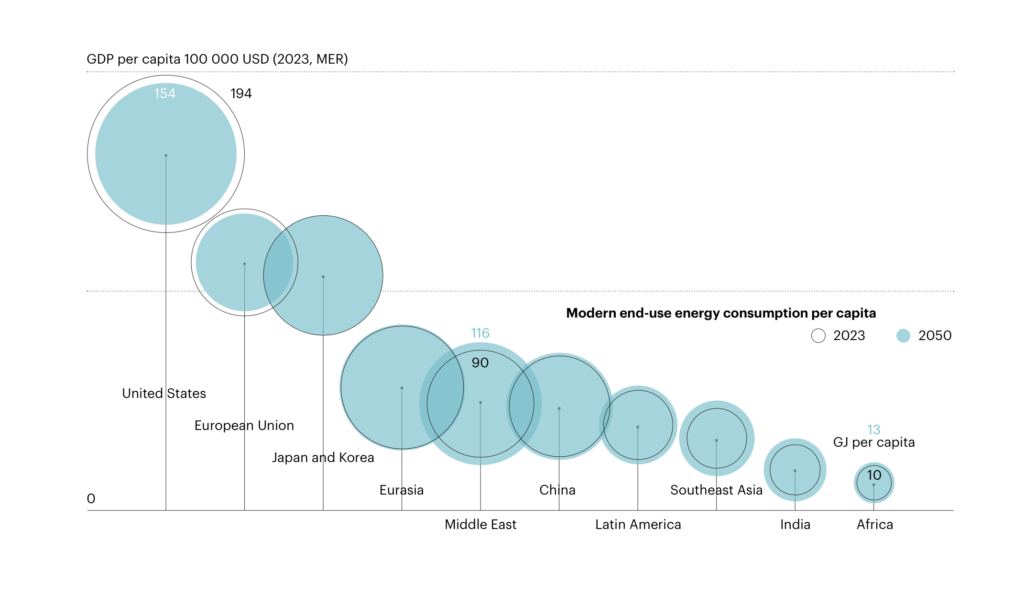The International Energy Agency’s World Energy Outlook 2024 report sheds light on the critical challenges and opportunities facing the global energy landscape. As geopolitical tensions rise and climate change impacts intensify, the report underscores the urgent need for sustainable energy solutions, particularly in the realm of solar energy.
Geopolitical Risks and Energy Security
Escalating conflicts, such as the ongoing situation in Ukraine and tensions in the Middle East, have heightened energy security risks worldwide. These events serve as a stark reminder of the vulnerabilities inherent in our energy supply chains, particularly for clean energy technologies that have become increasingly concentrated in specific markets.
The report reveals that since 2020, nearly 200 trade measures affecting clean energy technologies have been implemented globally, compared to just 40 in the previous five-year period. This fragmentation complicates the energy transition, making it imperative to develop robust and resilient clean energy supply chains.

Clean Energy Transition: A Mixed Picture
Despite the challenges, the momentum behind clean energy transitions remains strong. The IEA notes that investment in clean energy projects is approaching USD 2 trillion per year, almost double the combined spending on new oil, gas, and coal supply. This financial commitment is essential for expanding solar energy capacity, which is projected to grow significantly in the coming years.
By 2030, global electricity demand is expected to add the equivalent of Japan’s total electricity consumption annually, driven by factors like rising air conditioning use, electric vehicles, and digital services. Solar energy, as one of the most scalable renewable options, is positioned to play a pivotal role in meeting this demand.

The Rise of Solar Energy
The report highlights the robust growth in solar installations, which reached over 560 gigawatts of new capacity in 2023. As costs for solar technology continue to decline, this trend is set to accelerate, making solar energy increasingly accessible. China, for example, accounted for 60% of new global renewable capacity added in 2023, showcasing its dominance in the solar sector.
However, challenges remain. The integration of new solar capacity into existing power systems is critical, and policymakers must address issues such as permitting delays and grid expansions to facilitate smooth transitions.

A Sustainable and Resilient Energy Future
As the report emphasises, building a sustainable energy system requires prioritising security, resilience, and flexibility. It is crucial to ensure that the benefits of the new energy economy are widely shared. With energy-related CO₂ emissions reaching record highs, the transition to solar and other renewable sources is more urgent than ever.
Furthermore, the report identifies a significant opportunity for developing economies to leapfrog traditional energy sources by investing in clean technologies. By providing access to affordable solar energy solutions, these regions can not only meet their energy needs but also contribute to global emissions reduction targets.
The Future of Solar Energy in the UK
The World Energy Outlook 2024 highlights a significant opportunity for the UK solar sector, targeting an increase of 70 GW in solar capacity by 2035. As the nation strives for 68% emissions reduction from 1990 levels by 2030, investments in clean technologies are expected to accelerate. The IEA indicates that investments in clean technologies are nearing USD 2 trillion annually, nearly double that of fossil fuels. This trend is expected to facilitate greater solar adoption across residential and commercial sectors.
With the right policies and investments, the UK solar energy sector is well-positioned to make a significant impact on both the national grid and local communities, fostering a sustainable and resilient energy future.
Conclusion
The World Energy Outlook 2024 report presents a complex yet hopeful narrative for the future of energy. As we face escalating demand and climate challenges, solar energy stands out as a key solution to achieving a sustainable and resilient energy future. By embracing innovative policies and technologies, we can harness the full potential of solar energy to meet our global energy needs.
For further insights, you can access the full report on the IEA website here.
Additional Reading Resources
For those interested in exploring more about solar energy and retrofitting, here are some valuable articles from PowerMarket:
- Solar Panel Retrofitting: A Complete Guide to Boost Energy Efficiency in Commercial Properties
Discover how to integrate solar panels into building retrofits for enhanced energy efficiency and sustainability. - Why is Roof-Top Solar Growing Faster Than Utility-Scale?
Explore the advantages of rooftop solar and its increasing significance in the energy transition. - Councils Can Save Residents £1600 off Their Annual Energy Bills with Rooftop Solar
Learn how local councils can leverage rooftop solar to lower energy costs for residents while advancing climate goals. - The Great Decarbonisation Debate: Fabric First or Solar
Explore the ongoing debate in the world of energy efficiency: should you prioritise upgrading the fabric of buildings or invest in solar technology first?
About PowerMarket
PowerMarket is the all-in-one platform transforming commercial real estate with solar energy. Designed to simplify solar adoption, it helps businesses decarbonise and turn their properties into revenue-generating assets.
Through PowerMarket, users can plan, install, finance, and trade solar energy effortlessly on a single, user-friendly platform. It streamlines the entire process, saving over 90% of the time and resources typically required.
Recognised by the Financial Times as a leading energy-tech venture in Europe and supported by Oxford University and the European Space Agency, PowerMarket is at the forefront of democratising solar.
